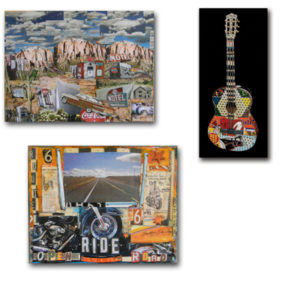
How Developing a Strong Style and Laser-Like Focus is One of the Most Important Things you can do for Your Fine Art Career
A number of years ago, I was approached by an artist who was seeking gallery representation in Scottsdale. She had been into the gallery during an opening and after striking up a conversation, had asked if she might stop back by the gallery and present her portfolio to me when I had more time. I had agreed and she was now back in the gallery on a quiet weekday afternoon with portfolio in hand.
The moment I saw the portfolio I knew I was in trouble. I am not exaggerating to say that this portfolio was at least two inches thick and must have weighed a good eight or nine pounds. After a brief conversation and reintroduction, she handed me the portfolio and said, “this is really only a small sampling of my work – I’ve been painting for over forty years and I have hundreds more images.”
I opened the portfolio and began randomly paging through with the artist looking expectantly on.
There was simply too much work in the portfolio, and I felt as if I were taking a survey of the entirety of art history. The work literally encompassed every style from cave painting (granted, an abstract take on it) to the Renaissance, the impressionists and all of the modern movements since – expressionism, minimalism, and pop, to name a few.
“You’re work is quite diverse,” I said.
The artist took it as far more of a compliment than I intended. “I’ve always felt,” she said, “that it’s important not to get myself pigeonholed into one particular style or theme . . . I like to keep my work fresh.”
I don’t remember the rest of our conversation – although I’m sure I politely waved her off with a stock “we don’t have any room right now,” or “we’re not the right fit.” Looking back, I wish I would have taken the time to give her feedback on her presentation and body of work, as she surely went on to have a very difficult time persuading a gallery to carry her work using that all-encompassing approach.
While this is an extreme example, I encounter variations of this approach quite frequently. Now that I have been in the business longer and have more experience working with artists, I always try to have a conversation about the importance of consistency (not to mention the importance of creating a concise portfolio).
So why is it important to develop a consistent body of work?
. . . the decision I am ultimately making is whether I am willing to invest in the artist and their work . . .
Step into my shoes for a moment and view your art through the eyes of a gallery owner. You will quickly see that as I consider an artist for representation, the decision I am ultimately making is whether I am willing to invest in the artist and their work.
I am going to devote expensive wall or pedestal space to displaying the art. I am going to have staff spending time and resources promoting and selling the work. I am going to spend advertising dollars informing potential clients about the work. In order to make this kind of commitment, I have to feel confident that I can see a return on the investment.
This is not to say that I am not willing to stretch and take risks with unproven artists, but I am far less likely to make such an investment if I see inconsistency in the work. My concern is that I will make the investment and begin to build a following for the artist’s work, only to have the artist make a sudden and drastic change in their style, forcing me to start over again. It can sometimes take years to build a following for an artist, and during that time a steady stream of consistent work is key.
Of course, there are many other considerations – quality, creativity, and confidence – but consistency is actually one of the first indicators I look for as it often speaks to the other factors as well.
In fact, when asked what an artist should do to increase their odds of finding gallery representation and building long-term commercial success, consistency would be the very first factor to which I would point. That’s right. Even above quality and creativity, I feel that consistency is the key to long-term success.
So what do I mean by “consistency”? Many artists hear the word and feel a cold-sweat break on their brow. Most artists can understand the importance of consistency almost instinctually, but when it comes to actually creating a body of consistent work, they’re not sure where to begin. Does this mean they should only have one style and one subject? Does it mean they don’t have any latitude to experiment and evolve? Does consistency become a straightjacket to creativity?
To answer these questions we need only delineate our goal. While my ultimate goal is to sell an artist’s work and create a base of collectors who will sustain the artist over the long-term, the immediate goal in terms of consistency is much simpler: when someone walks into my gallery, I want them to see a number of your pieces and have them be able to instantly recognize all of the work as having been created by one artist. I want the artist (you!) to give them a strong thread running through the work that ties it all together. From the first piece they encounter to the last, I want them to look at each and see its relation to the others.
Furthermore, when that same client walks into the gallery a year from now, I want them to see and recognize the new work in the gallery at that time as yours. In the marketing world they call this “branding” and that is exactly what we want to accomplish with your work.
Seeing consistency this way, you will realize that you do have some latitude to vary your work. You can paint landscapes and still-lifes as long as the style or presentation ties the work together. You can sculpt figures and animals as long as the visual language is consistent across the work. You can even vary the media you employ to create the work if the subject matter and theme are unified.
A few illustrations from artists in my gallery will help to illustrate what I mean:
Guilloume. Even though this artist works in oil and bronze, his figurative subject matter and his consistent style translates across the mediums. There is no doubt in a viewer’s mind that this work was created by a single artist with a clear vision of his work.
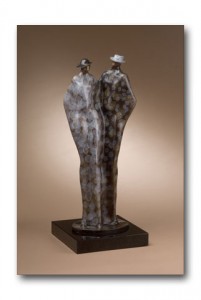
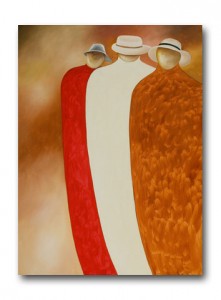
Lorri Acott. Lorri produces in both bronze and clay mediums and sculpts both animals and figures, but her style is consistent and clear. Through the use of elongated limbs and a “cracking” in her forms, both humans and horses are easily identified as being Lorri’s work.
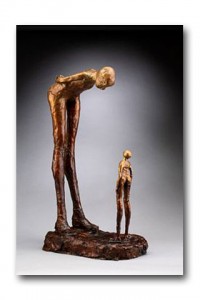
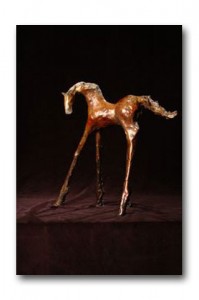
John Horejs (full disclosure, this artist is my father). Though creating desert and mountain landscapes, florals and still-life work, Horejs’ style and presentation tie his work into a cohesive body.
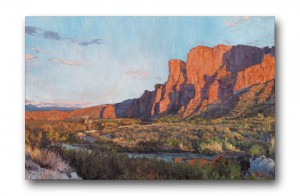
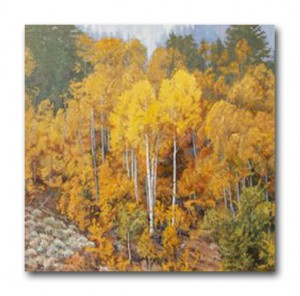
Dave Newman. Newman’s nostalgic Americana inspired style is both unique and consistent.Though Newman relies on random found objects to create his imagery, he has a very clear vision of how he will give these objects context and how the objects relate to one another. Again, presentation becomes an important part of the equation in creating consistency in Dave’s work.
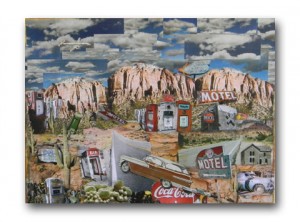
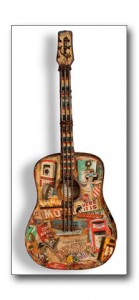
Jeanie Thorn. It is easy to identify Jeanie’s work by the materials she consistently employs. While she varies the size and shape of her sculptures, there is an obvious unification amongst her work that allows visitors to the gallery to locate her work with ease, even when it is scattered across multiple walls.
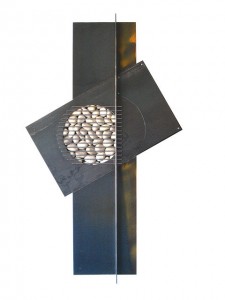
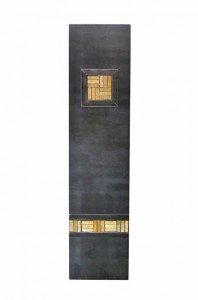
“But Jason,” you object, “I’m afraid I am going to get pigeonholed into my current style or subject matter and frankly, I just get bored quickly.” I understand these concerns. Here are some considerations that will allow you to live with (and embrace) consistency:
- Edit. The great allure of being an artist is that you get to try new things and you are your own master. I’m not suggesting that this has to end, that you are stuck for the rest of your life creating the same art over and over again. What I am suggesting is that you make a conscious decision that the work you are preparing to present to the public or to galleries must be consistent. You can do the abstract work if you are primarily a landscape painter, but don’t include it in your public portfolio. Edit your work down to only the work that is congruent.
- Give yourself parameters. Allow yourself one experiment out of every 20 pieces – 19 are going to be the consistent, the twentieth can be whatever you feel like doing. This twentieth piece might end up hanging in your private collection or might become a gift to a friend or family member.
- Evolve. “Look at Picasso”, you say, “he didn’t just stick with one thing throughout his life.” I will agree with you, but if you look at the arc of the lifetime of work Picasso created, you will see an evolution over years and decades. What I want you to avoid is the bi-monthly reinvention that many artists experience on a regular basis (you may be going through this now).
Now here’s the secret about passion: passion isn’t that feeling you get when you first try something. True passion comes after you’ve sacrificed and devoted yourself; after you have been true to your commitment
- Choose. Sometimes a lack of consistency comes not out of a love of variety but instead out of a fear of commitment. You might have three or five (or twenty!) different styles you have dabbled in and you’re just not sure which one is the right fit – which one will engender success and sales. I am often asked what style of art sells the best. My answer is simple: the style which any individual artist is most passionate about. Art taps emotion and you are going to be far better at selling if you can make a primal connection with your viewer. You are going to be far better at making this kind of connection if you are creating work that you are passionate about. Now here’s the secret about passion: passion isn’t that feeling you get when you first try something. True passion comes after you’ve sacrificed and devoted yourself; after you have been true to your commitment. There are no two ways about this and you are eventually going to have to make a decision when it comes to your direction – so why not make it now?
- Cheat. If you have work that is close but not quite consistent, you can fudge a bit by simply using a consistent presentation. You would be amazed at the variety of work that can show together simply because it’s in the exact same frame or has an identical base. There are limits to how far you can push this cheat, but in a pinch it can maintain your portfolio’s consistency.
I met another artist several years ago who had made a commitment to consistency. She decided to focus on one subject for a year. Instead of becoming bored with the subject, she reported that the more time she spent with it, the more she began to see that there is an infinity of variety in the nuances of any subject.
If you have a problem with consistency, I encourage you to make a similar commitment. I promise you that this commitment will have a revolutionary effect on your work and your success as an artist.
Did you Find this Article Helpful?
If you found this article helpful and would like to receive free information about the art business and insights that will help you sell more art, be sure to sign up for our email list.